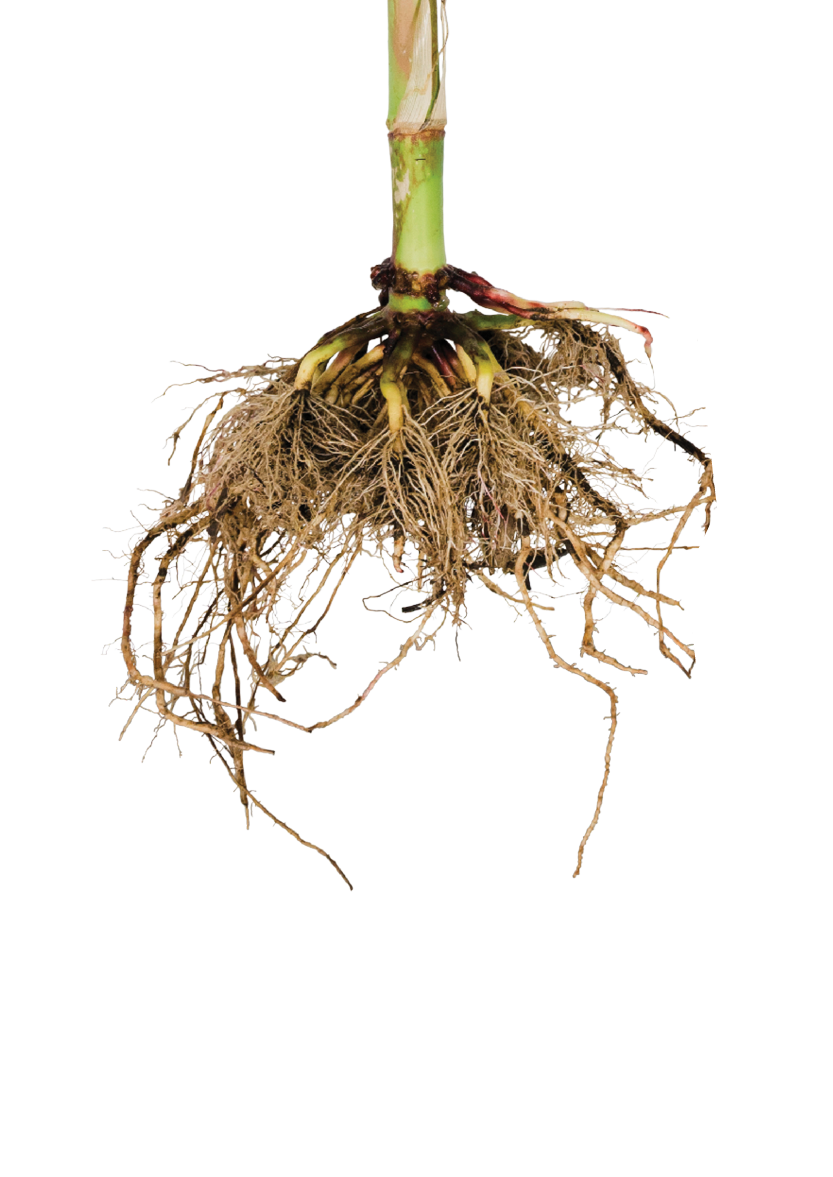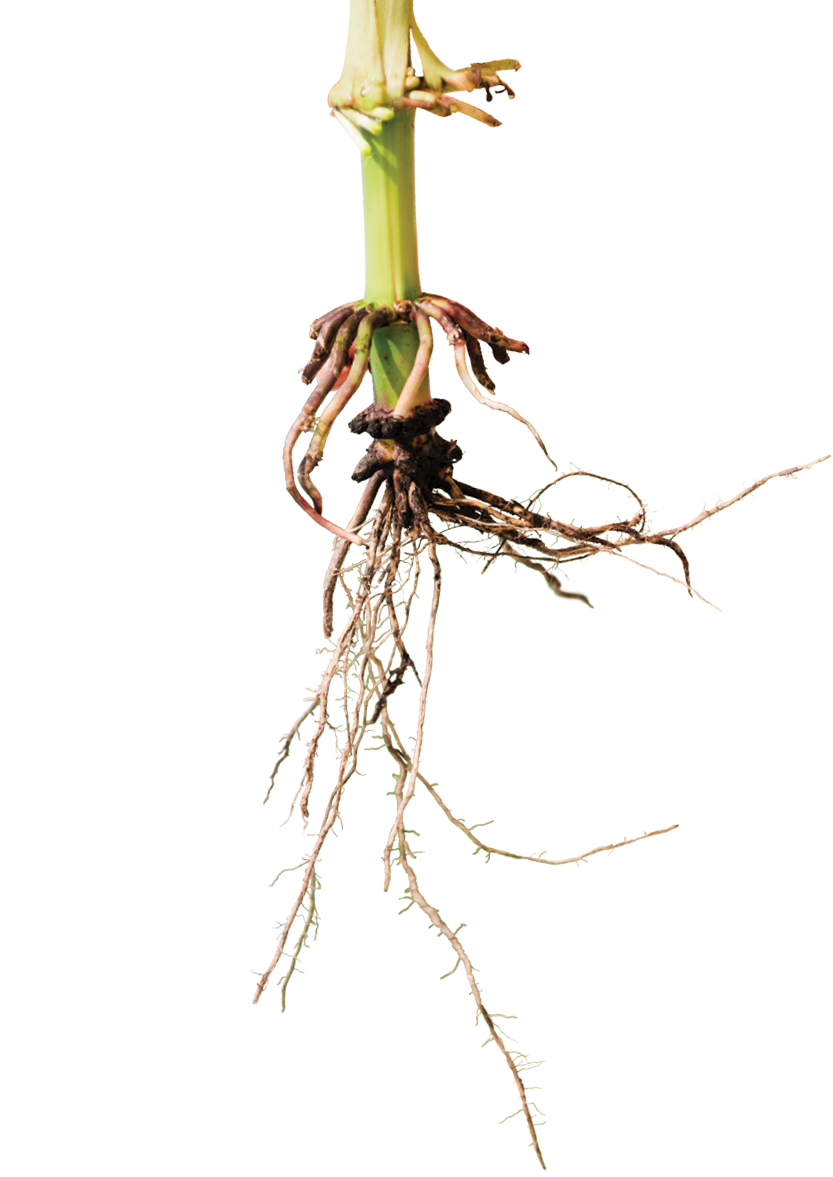Nurizma® Insecticide
Nurizma® insecticide is a novel in-furrow liquid insecticide that protects standability and yield potential where corn rootworm poses an economic threat to on-farm productivity. Nurizma insecticide treatment sustains or provides season-long crop benefits through healthier and more robust root systems. Other benefits from Nurizma insecticide treatment include better plant standability and increased stress tolerance. Additionally, pollination may improve because of reduced silk clipping resulting from lower beetle populations.
Nurizma insecticide has a unique mode of action and is the first soil-applied insecticide registered for use in corn from IRAC Group 30. Nurizma insecticide has a Hazard Signal Word of Caution and is not a restricted use pesticide. Its low use rate, of 1 fl oz/A in corn, means less product to store, handle and dispose. It also offers control of secondary below-ground pests like wireworms, white grubs and seed corn maggots.

Label Information and Key Advantages
- No known cross resistance with existing modes of action
- Fewer containers to store and handle
- Not a restricted use pesticide
- In-furrow application at planting
- Hazard Signal Word: Caution
Key Pests
- Corn Rootworm Larvae
- Wireworms
- White Grubs
- Seedcorn Maggot
Nurizma® Insecticide Application with Dosatron®
A Dosatron® unit is a simple and user-friendly tool for applying Nurizma insecticide. The Dosatron works by simply and accurately injecting Nurizma insecticide solution into the flow of the liquid starter fertilizer or water prior to distribution to each row unit.
Bold, fast and easy, the unit works by pumping Nurizma insecticide from a planter-mounted 15-gallon tank through the Dosatron injection system. A Dosatron filled with one part Nurizma insecticide and one part water provides 960 acres of protection on 30-inch rows. The system helps you maintain your efficiency in the field by minimizing frequent refills. It ultimately helps ensure your corn stands tall all season long.
Planter WITH existing
in-furrow application system
- Install the Dosatron 500 DOSINJ215 per manual instructions onto planter
- Adjust injection rate
- Add Nurizma insecticide + water
- Plant corn!
Planter WITHOUT existing
in-furrow application system
- Install in-furrow liquid system on planter
- Install the Dosatron 500 DOSINJ215 per manual instructions onto planter
- Adjust injection rate
- Add Nurizma insecticide + water
- Plant corn!
If liquid fertilizer is NOT being used, Nurizma insecticide can be tank mixed with water as carrier in an in-furrow liquid system with agitation
DOSATRON SETTINGS FOR NURIZMA INSECTICIDE APPLICATION
(1 OZ NURIZMA + 1 OZ WATER) |
||
Dosatron 500 DOSINJ215
You’re just a few steps away from applying Nurizma insecticide so your corn stands tall all season long. Your new Dosatron 500 DOSINJ215 In-furrow Direct Injection Kit is a simple, user-friendly tool to apply Nurizma insecticide. Its 12-volt electric agitation pump accurately disperses Nurizma insecticide and water at a rate of two ounces per acre. Adding it to your planter is a matter of these easy steps:
- Bolt it on — It’s best to find a central location before the manifold
- Plumb in the Dosatron outlet hose to the main liquid supply line ahead of the row unit metering system
How the Dosatron unit works
- The main liquid solution flow mechanically drives the Dosatron piston system that cycles anytime the main pump is generating liquid flow. This meters the Nurizma insecticide into the stream at the set rate. The mechanical, flow-driven system in essence works similar to a hypodermic syringe
- Once the Dosatron has metered Nurizma insecticide into the stream, the liquid carrier from the main tanks and Nurizma insecticide are mixed, then flow through the row unit meters and out of the in-furrow injection boot or nozzle


Pre-season Checklist:
- Inspect the system components, ensure screens and check valve are clean and free of debris
- Fill tanks with clean water and run the system to monitor each row for consistent flow
- Read Nurizma insecticide label to determine rates
- Adjust injection rate by hand
- Fill the main planter tank(s) with water or liquid fertilizer
- Fill Dosatron tank with 1 part Nurizma insecticide and 1 part water
- Pressurize the main water/fertilizer system with the Dosatron valve in the off position to agitate the Dosatron tank for 5 minutes
- Turn on Dosatron unit valve and start planting corn!
Best Practices + Maintenance During Planting
- When in use, continuously run the electric agitation pump to ensure suspension of product
- If stopped for any period of time, run agitation pump before resuming application
- Anytime the planter will sit idle for more than 1 hour, shut off Dosatron injection valve to run straight water/liquid fertilizer through the plumbing
- 100 to 200 feet to flush out the system is recommended
- Always follow Nurizma insecticide’s label
- Always follow directions in operator’s manual
After Season Maintenance:
- Flush planter’s in-furrow system before annual storage
- Rinse Dosatron unit with water and let dry completely before annual storage
- Partially fill planter and Dosatron tank with RV antifreeze and run the liquid injection system until flushed through row units
- Store Dosatron unit indoors if possible
- Replace any worn or broken materials

Nurizma® Insecticide FAQ
Nurizma insecticide can be applied in conjunction with liquid starter fertilizers or a mixture of liquid starter fertilizer and water at planting but should not be tankmixed with liquid starter fertilizer. Nurizma insecticide requires a Dosatron, which is a direct in-line injection system that is calibrated to accurately deliver the target application rate of Nurizma insecticide per acre in-line with a liquid carrier such as water or liquid fertilizer. In-furrow plumbing and injection hardware systems vary by planter and row unit configuration. Before applying Nurizma insecticide, please read the complete label and follow all label directions. Due to the many brands of fertilizers and micronutrients, Nurizma insecticide has not been evaluated for compatibility with all possible combinations.
BASF recommends Nurizma insecticide be diluted in 5 gallons per acre of carrier at the 1 oz./A use rate. Applications at 5 GPA help ensure improved compatibility and performance of Nurizma insecticide alongside the carrier of liquid fertilizer or water and support improved and uniform distribution of in-furrow product. Additionally, Nurizma insecticide should be diluted with a 1 to 1 ratio with water mixed within the Dosatron tank to ensure proper metering and application.
The Nurizma insecticide label does not allow tank mixes with Headline SC fungicide or other SC formulated products.
Corn Rootworm Scouting
Corn rootworm is one of the highest economic losses in corn each year, causing over 3 billion dollars in damage annually.1
Successful management starts by understanding the status of corn rootworm pressure in each field. The best way to manage corn rootworm is to determine the severity of the issue and create a management plan for improvement. When corn starts to tassel, that’s your cue to get out in the field and scout for corn rootworm injury.
How to scout for corn rootworm root injury:
- Choose 10 plants randomly from the field, making sure to dig fully around the roots. It is recommended to dig at least 6 inches around the plant.
- Clean the roots: Shake the roots free of as much soil as possible, being mindful not to break any roots. Clean the roots with water using one of the two methods below.
- Soak the roots in water using a large container for several hours or overnight. Once fully soaked, use your hands and the existing water in the container to free all soil and debris.
- Power wash the roots after they have been soaking in water for a period of time. Be careful not to damage roots with the nozzle.
- Use the Node-Injury Scale (NIS) 0-3 rating system from Iowa State University to access root injury.
- Culliney, Thomas W. “Crop Losses to Arthropods.” In Integrated Pest Management: Pesticide Problems, Vol. 3, 201-225. Dordrecht, The Netherlands: Spring Science + Business Media, 2014. Pinstrup-Andersen, Per. “The Future World Food Situation and the Role of Plant Diseases.” In the Plant Health Instructor. 2001. DOI: 10.1094/PHI-I-2001-0425-01.
NIS RATING FOR ROOT INJURY BY CRW
| ROOT INJURY DESCRIPTION | |
|---|---|
| No visible root injury | |
| Root scarring | |
| Severe root scarring or root tips pruned beyond 1.5" of crown | |
| 10% of a node pruned within 1.5" of crown | |
| 25% of a node pruned within 1.5" of crown | |
| 75% of a node pruned within 1.5" of crown | |
| A full node pruned within 1.5" of crown | |
| One full node and 50% of another node pruned within 1.5" of crown | |
| Two full nodes pruned within 1.5" of crown | |
| Three full nodes pruned within 1.5" of crown (maximum value) |
0.1

0.5

1.0

1.5

2.5

3.0
